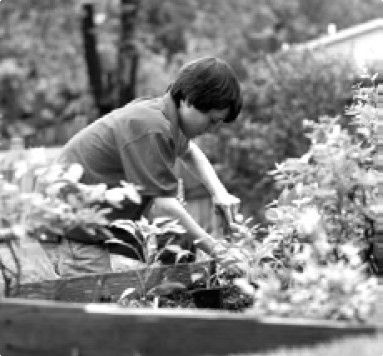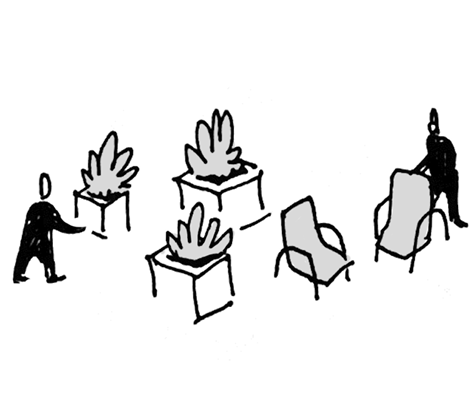…Make the Public Space System responsive to human need for Co-Production and adaptivity.

__Problem-statement: People need environments that they can shape for themselves, as play, as art, or just to be comfortable.__
Discussion: A malleable environment is one we can shape ourselves, and engage with our creativity and enjoyment. Not every environment needs to have malleability — but at least some of them do. A playground with sand… a garden with plants and dirt... a public space with Movable Seating…

Gardens offer an especially malleable (and pleasurable) environment.
In a sense, all of our human environments need some form of malleability.¹ For example, we close curtains, we open doors, we position windows for just the right amount of fresh air — not too much… We need responsive environments to meet our needs, and moreover, to meet these needs as they change over time.
__Therefore: Provide for malleability in the urban environment, in the form of materials that can be shaped, adjusted, and changed over time.__

Use malleability to produce Human-Scale Detail with Complex Materials. Use malleable materials, like cardboard, foam or sandbags, to shape a Community Mockup to develop a more permanent structure later. …
notes
¹ The idea of environmental responsiveness is discussed in Bentley, I., Alcock, A., Murrain, P., McGlynn, S., Smith, G. (1985). Responsive Environments: A manual for designers. London: Routledge.
See more Affordance Patterns and a discussion on the distinction between Moldability and Malleability.